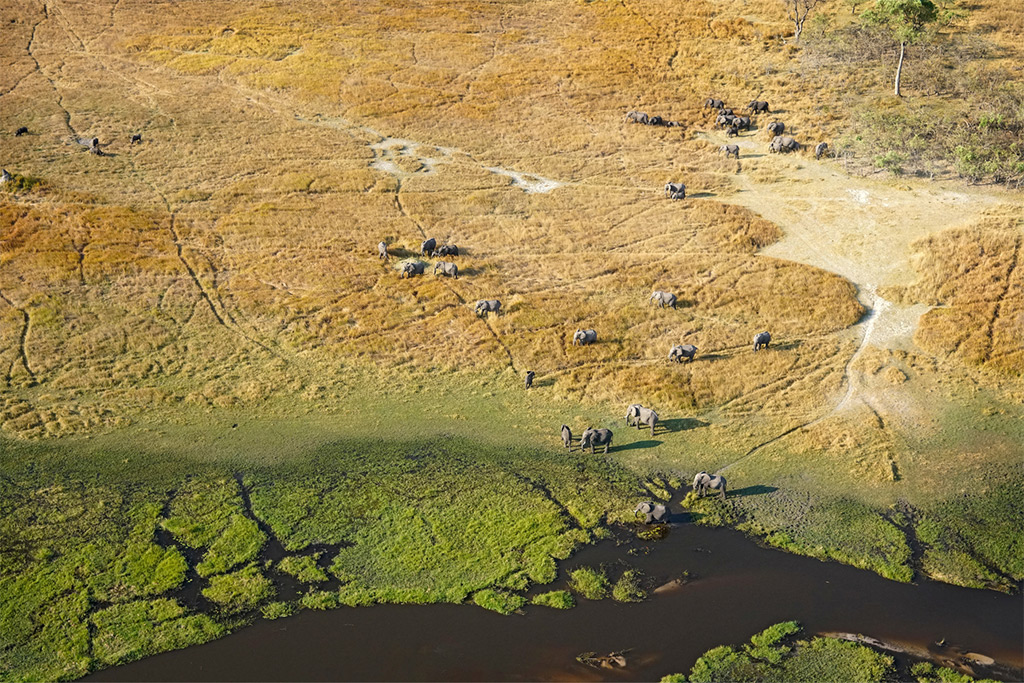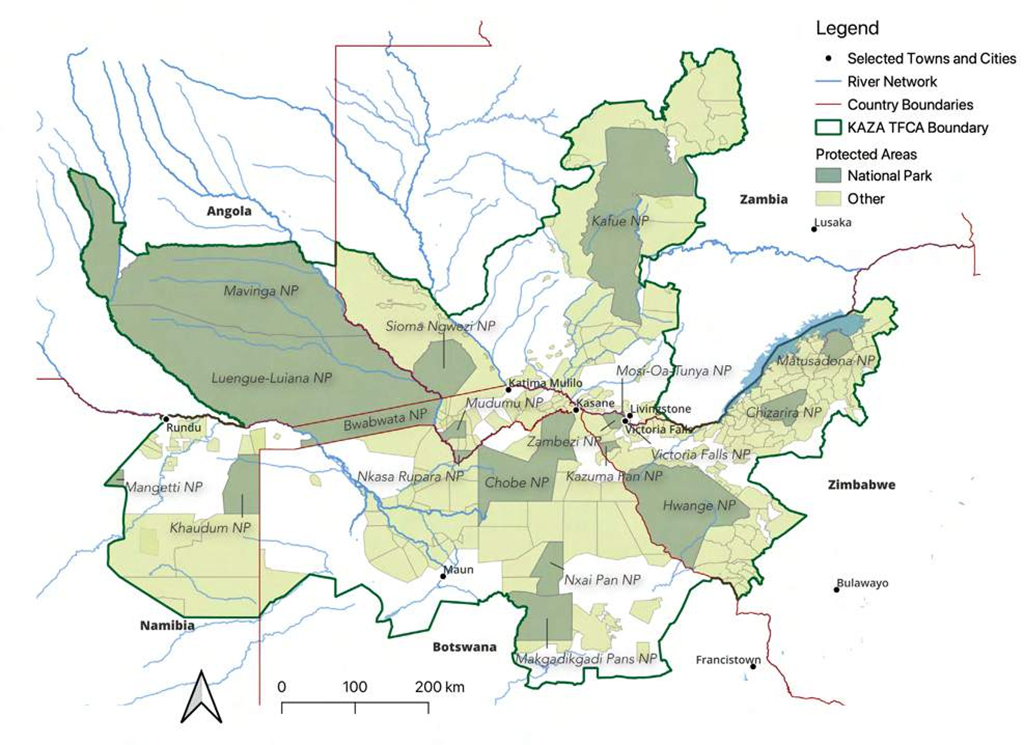 The Kavango-Zambezi (KAZA) Transfrontier Conservation Area has released the 2022 KAZA Elephant Survey results, revealing with cautious optimism that elephant populations within the region are stable.
The Kavango-Zambezi (KAZA) Transfrontier Conservation Area has released the 2022 KAZA Elephant Survey results, revealing with cautious optimism that elephant populations within the region are stable.
The KAZA Transfrontier Conservation Area (TFCA) covers land in Angola, Botswana, Namibia, Zambia, and Zimbabwe. KAZA’s elephant population represents more than half of the remaining African savannah elephants on the continent.
The survey reveals an estimated elephant population of 227,900 in the KAZA TFCA – an increase of 10,000 from the population estimate made by the 2016 IUCN African Elephant Status Report. However, distinctly high elephant carcass ratios in certain areas may indicate high elephant mortality rates, highlighting the need for more investigation.
The survey revealed that Botswana hosts the highest number of elephants, with 131,909 elephants estimated to be present in the country during the survey. Across the KAZA TFCA, 58% of the elephants were found to be in Botswana, 29% in Zimbabwe, 9% in Namibia, and the remaining 4% were found in Zambia and Angola combined. Zambia is the only country showing a decline in elephant populations, with an estimated population of 3,840.
Elephant carcasses made up an estimated 10.47% of the total population – a cautionary signal of a possible negative population trend requiring further assessment. “Several factors are likely contributing to the somewhat elevated mortality we’re observing,” said Darren Potgieter, KAZA Elephant Survey coordinator. “Factors such as ageing populations, improved sampling methodologies, environmental conditions, and poaching could all be at play here.” Habitat loss and associated human-elephant conflict and disease were also cited as possible reasons for high mortality rates.
Fresh and recent carcasses (elephants that died in the 12 months prior to the survey) represented 0.51% (1,165 elephants) of the total estimate. The highest ratio of fresh and recent carcasses was observed in Botswana (962 carcasses – 0.72%). A concentration of fresh and recent carcasses were identified in the border region between Botswana and Namibia along the Kwando-Linyanti-Chobe River system. The Botswana Department of Wildlife and National Parks was informed of the high number of fresh carcasses seen during the survey, and an investigation into the cause of death is ongoing. Based on investigations, poaching has been ruled out, and the tusks on the carcasses were intact.



The survey also produced estimates for other species populations, such as buffalo, giraffe, wildebeest, and zebra. The number of livestock herds reflected a ratio of wildlife to domestic stock that was almost equal, highlighting growing pressures on water and rangelands.
The survey’s insight into human and livestock population distribution in relation to wildlife showed growing fragmentation and isolation of wildlife habitat. This fragmentation due to encroachment of human and livestock activity affects the connectivity and mobility of wildlife populations, making the ecosystem “vulnerable to disturbances and less able to adapt to changing climatic conditions”, said the report. There was also a trend of elephants being absent from regions heavily populated by humans and livestock. The survey revealed notably high pressure in the central Zambezi region of Namibia. This region, covering the Kwando and Zambezi-Chobe Wildlife Dispersal Areas, is critical for wildlife movement and migration.
The distribution of elephants showed a higher density of elephants near permanent water sources such as the Okavango and Chobe-Linyanti-Kwando River systems, as well as in parts of northwestern Matabeleland (Zimbabwe), where artificial water supplies are widely available in Hwange National Park.


Given the large survey area, several aircraft needed to be deployed simultaneously, requiring careful coordination. The survey was flown from August to October 2022 during the dry season when elephants could be seen more easily. The survey involved reconnaissance flights, ground support from logistics teams and various observers. 310,865km2 were sampled over 700 hours of flights. Using the CITES Monitoring the Illegal Killing of Elephants (MIKE) programme Aerial Survey Standards, the survey ensured rigorous quality assurance metrics.
In a joint communique, ministers from the KAZA TFCA pledged to translate the survey’s findings into practical policy measures and supportive legislation to ensure the long-term persistence of wildlife in the region.
Further reading
Read about the KAZA elephant management plan here.
Wildlife corridors, such as those created by KAZA, offer paths of connection for wildlife. Read more about how these reduce the loss of life and livelihoods.
To comment on this story: Login (or sign up) to our app here - it's a troll-free safe place 🙂.![]()






